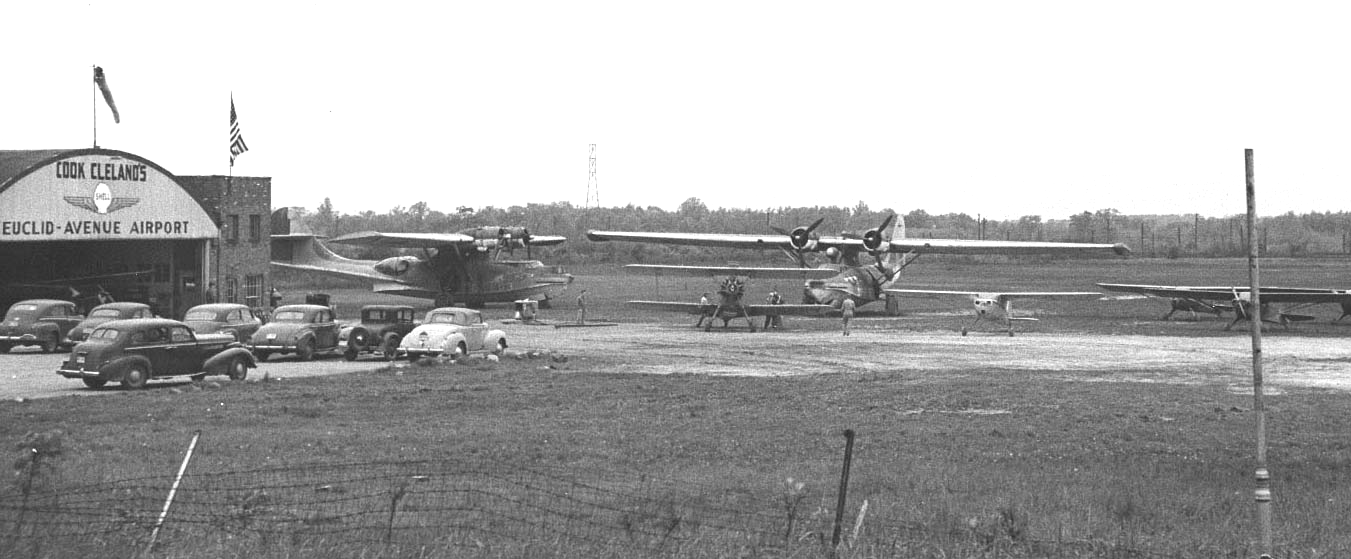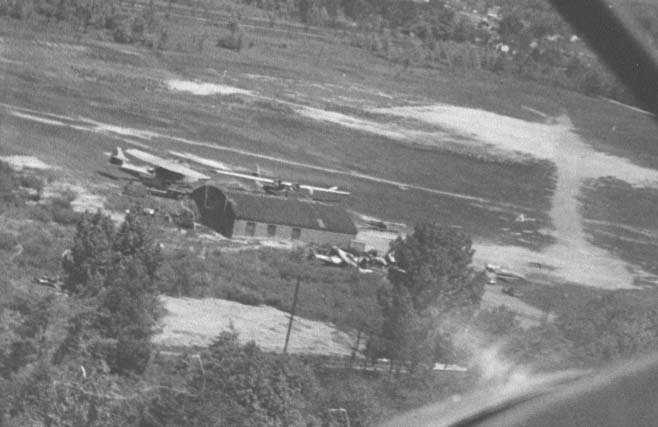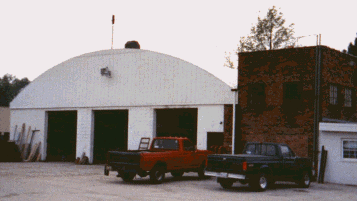
Cook Cleland’s Airport
Cleveland native Cook Cleland joined the Navy in 1940, and took his flight training at Lambert Field, Missouri. His advanced training qualifying him as a dive bomber pilot. When WW II began, his squadron was shipped to England and based at Scappa Flo. The squadron, equipped with obsolete SB2-U2's, was soon shipped back to the States for training on Douglas SBD's.
Next stop was the carrier Wasp, when the Wasp was sunk Cook spent several
hours in the water while a destroyer was depth charging the sub that sunk her.
Not a pleasant experience. Cook than joined VB-16 on the Lexington. During the battle of
the Philippine Sea Cook sank the
Japanese carrier Juno with the 500-pound bomb he put on its rear deck. During his tour in
the South Pacific, he shot down three Japanese planes and his
back seat gunner two.
On return to the States, he evaluated captured enemy aircraft including a German Me-262 as a Navy test pilot.
After the war, Cleland acquired a small airport in suburban Willoughby, Ohio, which he dubbed "Cook Cleland's Euclid Avenue Airport" and was joined by Dick Becker who flew PBY’s and PBM’s in the South Pacific as a Navy enlisted pilot. As an FBO, he offered flying lessons, banner towing and air charters. Wanting to expand his air charter service, Cook purchased three surplus PBY Catalina Flying Boats; he sold one at the point of purchase and with Becker’s help he brought the two into Euclid Road airport (quite a feat).
To be certified for commercial, use the FAA required the following modifications:
1. Aluminum firewall’s had to be replaced with stainless steel.
2. Fabric on 2/3rds of the wing had to be replaced with metal.
3. Controls mounted in the pylon had to be moved to the cockpit.
When these modifications were completed, a second PBY was sold. Work to convert the final plane for the new service which was to be called "Cook Cleland’s Catalina Airways", and designed to carry sportsmen to Kodiak Alaska for hunting and fishing trips began in earnest. The rear blister turrets were removed and covered over. The interior was modified, but not elaborate; the flying boat was completely painted, cream on top with a deep green on the bottom separated by a metallic bronze feature stripe.
In 1946 Cook entered the Cleveland National Air Races, with the help of some funding from Thompson Products employees with whom he had worked. His dream was winning the Thompson Trophy Race. Cook purchased one of the first surplus Corsairs; a FG-1D built by Goodyear in Akron, OH. He entered ex-Navy Corsairs in all four post-war races, realizing his dream twice.
4. About the time the PBY was finished, the FAA set the gross weight at 27,000 lbs., while the military normally flew them at 33,000 lbs. This weight restriction would allow for only two pilots and fuel for a non-stop trip to Alaska. Cook, now back on active duty, decided to ask Becker to sell the PBY.
Soon after advertising the PBY for sale, a representative from an air charter service
in Trinidad arrived, looking for a replacement of a PBY that was lost in a recent
hurricane. The purchase was completed and the ferry pilot made a fuel stop in Cuba. On
takeoff, someone forgot to secure the tunnel hatch and once on the step the hull began to
fill with water and the craft sank in deep water.

(Bud Ricketts)
Two of the three PBY Calalina’s shortly after they arrived.
Note the hi-tension towers at the North end of the field.

(Bud Ricketts)
On approach to the north runway, visible are the two
Catalina’s and if you look close you will see FG-1 #92
parked next to the hangar.
(Bud Ricketts)
One
of Cook's two banner towing Waco's, "Air Messages Inc."
(note modified PBY)

(Bob Roskuski)
Euclid Avenue hangar today.
 Please send comments to Bill Meixner
Please send comments to Bill Meixner
You are the
th person to pop in on us
since October 13, 2001, Thank You for the touch & go, please take an early flight
back..
Site last changed on
Monday, February 18, 2013 04:13 PM